I’m standing in the cleaning aisle, staring at rows of colorful cans, each promising to transform my home into a fresher, cleaner paradise. Febreze Air Effects and Lysol are the heavyweights here, but which one’s the real champ?
In this article, I’ll compare these two household staples, breaking down their strengths, weaknesses, and unique features to help you decide which is best for your needs.
From odor elimination to germ-killing power, I’ll share my experiences, insights, and a detailed analysis to guide you through the haze of sprays.
A Brief Comparison Table
| Feature | Febreze Air Effects | Lysol Disinfectant Spray |
| Primary Function | Odor elimination | Disinfection and odor elimination |
| Key Ingredient | Cyclodextrin (odor-trapping molecule) | Quaternary ammonium compounds (quats) |
| Disinfectant Properties | Limited (only in specific products) | Kills 99.9% of bacteria and viruses |
| Scent Options | Wide variety (e.g., Linen & Sky, Ocean) | Fewer options (e.g., Crisp Linen, Citrus) |
| Best For | Fabrics, air freshening | Hard surfaces, germ-heavy areas |
| Price (8.8 oz can) | ~$3–$5 | ~$5–$7 |
| Eco-Friendly Efforts | 100% natural propellant, recyclable packaging | Recyclable packaging by 2025 |
| Health Concerns | Possible respiratory irritation | Possible skin and respiratory irritation |
My Journey With Febreze And Lysol
I’ve always been a bit of a neat freak, but my home isn’t immune to the occasional whiff of last night’s curry or my dog’s muddy paws. Over the years, I’ve leaned on both Febreze Air Effects and Lysol Disinfectant Spray to keep my space feeling fresh and clean.
Each has its own vibe, like choosing between a sunny breeze and a sterile hospital room. To figure out which one deserves a permanent spot in my cleaning arsenal, I’ve put them through their paces, testing them in real-life scenarios: a smelly gym bag, a musty guest room, and a bathroom after a particularly potent taco night.
What Febreze Air Effects Brings To The Table?
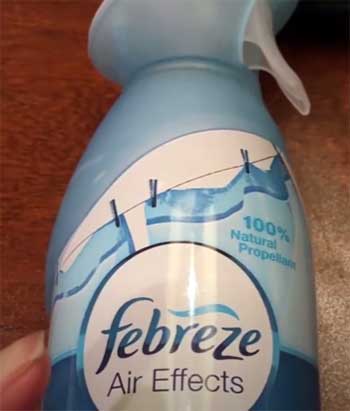
Febreze Air Effects is like that friend who walks into a room and instantly makes it feel brighter.
Its main mission is to tackle odors, and it does so with a molecule called cyclodextrin, which I like to think of as a tiny odor-trapping donut.
This ingredient grabs smelly molecules in the air or on fabrics and locks them away, reducing their ability to offend my nose.
I first tried Febreze when my couch started smelling like a mix of popcorn and dog fur.
A few spritzes of the Linen & Sky scent, and it was like I’d just reupholstered the thing.
Pros of Febreze Air Effects
- Odor Elimination Powerhouse: Febreze doesn’t just mask smells; it neutralizes them. I sprayed it in my car after a spilled latte, and the sour milk stench vanished, replaced by a crisp, clean scent.
- Versatility: It’s safe for fabrics, curtains, carpets, and even the air. I’ve used it on everything from sneakers to throw pillows without worrying about stains.
- Scent Variety: With options like Ocean, Hawaiian Aloha, and Unscented, there’s something for everyone. I’m partial to the Wood scent for its cozy, earthy vibe.
- Ease of Use: The fine mist disperses evenly, covering large areas with minimal effort. Two quick sprays in my living room, and it’s like I opened all the windows on a spring day.
- Sustainability Efforts: Febreze uses a 100% natural nitrogen propellant, which feels like a small win for the planet. Plus, their bottles are recyclable, and some are made from post-consumer plastic.
Cons of Febreze Air Effects
- Limited Disinfecting Power: Most Febreze Air Effects products, including the standard sprays, don’t kill germs. If you’re looking to sanitize, you’ll need their specific Antimicrobial Fabric Spray, which isn’t as widely available.
- Temporary Fix: While it traps odors, it doesn’t address their source. My kitchen trash still needs emptying, even after a Febreze spritz.
- Potential Health Concerns: Some reports, like one from the Environmental Working Group, found 87 chemicals in Febreze Air Effects, including some linked to respiratory irritation. I haven’t noticed issues, but it’s worth considering if you’re sensitive to chemicals.
- Scent Overload: Some scents, like Sweet Watermelon Vine, can feel overpowering. I once overdid it and felt like I was living in a fruit smoothie.
- Not a Deep Cleaner: Febreze is great for quick fixes but doesn’t clean surfaces. If your issue is grime or bacteria, it’s not enough.
Lysol’s Germ-Killing Grit
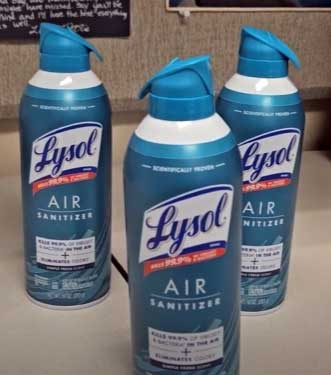
Lysol, on the other hand, feels like the no-nonsense coach who demands a spotless locker room.
It’s primarily a disinfectant, designed to kill 99.9% of bacteria and viruses on hard surfaces like countertops, doorknobs, and bathroom fixtures.
Its active ingredients, quaternary ammonium compounds (quats), are like tiny assassins that take out germs on contact.
I first turned to Lysol during flu season, spraying it on every surface my kids touched.
It gave me peace of mind, and the Crisp Linen scent left my kitchen smelling like a freshly laundered shirt.
Pros of Lysol Disinfectant Spray
- Powerful Disinfection: Lysol’s claim to fame is its ability to kill 99.9% of germs, including viruses like the flu and COVID-19. I trust it in high-traffic areas like my bathroom.
- Odor Elimination via Germ-Killing: Unlike Febreze, Lysol tackles odors by destroying the bacteria causing them. My garbage can smells better after a Lysol spray because it’s actually cleaner.
- Versatile Applications: While best for hard surfaces, Lysol offers fabric-specific products like Lysol Fabric Sanitizer. I’ve used it on my kids’ backpacks with great results.
- Long-Lasting Scent: The Citrus Meadows scent lingers for hours, which means fewer sprays throughout the day.
- Trusted Brand: With over 130 years in the cleaning game, Lysol’s reputation for disinfection is rock-solid.
Cons of Lysol Disinfectant Spray
- Strong Scent: Lysol’s fragrances, like Early Morning Breeze, can be intense. I once sprayed too much in my small bathroom and had to open a window to breathe.
- Not Ideal for Fabrics: While Lysol has fabric-safe options, the standard spray can leave surfaces damp, which isn’t great for delicate materials like silk.
- Health Risks: Ingredients like quats can irritate skin or lungs if overused. I’m careful not to spray it near my face or in poorly ventilated areas.
- Higher Price Point: At $5–$7 for an 8.8 oz can, Lysol is pricier than Febreze, which can add up if you’re spraying daily.
- Limited Scent Options: Lysol’s scent lineup is narrower, and I find some, like Jasmine & Rain, a bit too medicinal for my taste.
Key Features of Febreze And Lysol Compared
To get a clearer picture, I tested both products in three scenarios: a smelly kitchen, a musty guest bedroom, and a bathroom with lingering odors. Here’s how they stacked up.
- Odor Elimination
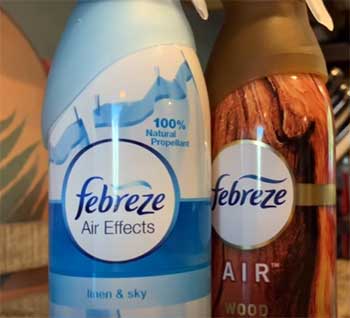
In my kitchen, where garlic and fish odors from last night’s dinner were staging a coup, Febreze Air Effects shone.
I used the Ocean scent, and within seconds, the air felt lighter, like a coastal breeze had swept through.
The cyclodextrin worked its magic, trapping the odors and leaving a pleasant, non-overpowering scent.
Lysol’s Crisp Linen spray also tackled the smell, but it took longer—about 10 minutes—to fully neutralize it.
However, Lysol’s germ-killing action gave me confidence that the odor’s source (bacteria in the trash can) was being addressed, not just masked.
Winner: Febreze for speed, Lysol for tackling the root cause.
- Disinfection
In the bathroom, where germs lurk on every surface, Lysol was the clear victor. I sprayed it on the sink, toilet, and doorknob, knowing its quats were wiping out 99.9% of bacteria and viruses.
Febreze Air Effects, while great for freshening the air, doesn’t disinfect surfaces or air. I’d need Febreze’s Antimicrobial Fabric Spray for any germ-killing, but even that’s limited to fabrics. If you’re worried about flu season or a sick kid, Lysol’s your go-to.
Winner: Lysol, hands down.
- Fabric Freshening
My guest bedroom had a musty smell from being closed up too long. Febreze Air Effects was a lifesaver here. I sprayed it on the curtains, bedding, and carpet, and the Linen & Sky scent made the room feel inviting in minutes.
Lysol’s Fabric Sanitizer worked well too, but it left the fabrics slightly damp, and the scent was less pleasant—more clinical than cozy. Febreze’s fabric-friendly formula and wider scent range made it the better choice for soft surfaces.
Winner: Febreze.
- Ease of Use
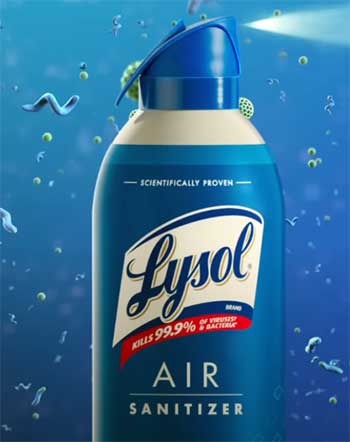
Both sprays are user-friendly, with ergonomic nozzles that release a fine mist.
Febreze’s mist feels lighter and disperses more evenly, making it ideal for large spaces.
Lysol’s spray is a bit heavier, which is fine for targeting specific surfaces but can feel excessive in open areas.
I also appreciate Febreze’s 100% natural nitrogen propellant, which feels safer than Lysol’s traditional propellants.
Winner: Febreze for its lighter, more versatile mist.
- Sustainability
Both brands are making eco-friendly strides. Febreze uses natural propellants and recyclable bottles, some made from post-consumer plastic. Lysol has pledged to use 100% recyclable packaging by 2025 and incorporates plant-based ingredients like citric acid.
However, Febreze’s current efforts give it a slight edge, especially since I can recycle their cans now, not years from now.
Winner: Febreze, but Lysol’s catching up.
- Price and Value
Febreze Air Effects is generally cheaper, at $3–$5 for an 8.8 oz can, compared to Lysol’s $5–$7. If you’re just freshening fabrics or air, Febreze offers better bang for your buck.
Lysol’s higher price is justified by its disinfecting power, but if germs aren’t your main concern, it might feel like overkill.
Winner: Febreze for budget-conscious buyers.
My Personal Experiences With Febreze And Lysol
Let me share a story. Last month, my dog rolled in something unidentifiable in the backyard, then lounged on my couch. The stench was unreal. I grabbed Febreze Air Effects (Pet Odor Eliminator version) and sprayed the couch generously.
Within minutes, the smell was gone, replaced by a subtle, clean scent. I was impressed but curious about Lysol’s approach. So, I tried Lysol Fabric Sanitizer on a different cushion. It worked, but the scent was sharper, and the fabric felt damp for longer. Febreze won that round for its quick-drying, pleasant finish.
On another occasion, during a cold that swept through my family, I relied on Lysol to disinfect every doorknob, light switch, and countertop. Knowing it could kill viruses gave me peace of mind, especially with young kids touching everything.
Febreze couldn’t match that level of germ-killing confidence, so Lysol became my go-to during sick season.
Health and Safety Considerations
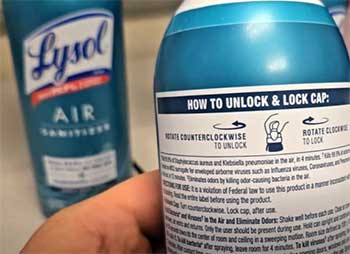
Both products have raised eyebrows over their ingredients.
Febreze’s cyclodextrin is generally safe, but studies like the one from the Environmental Working Group flagged chemicals like acetaldehyde and BHT, which could irritate lungs or skin.
I’ve used Febreze for years without issues, but I avoid spraying it in confined spaces.
Lysol’s quats are effective against germs but can cause skin irritation or respiratory discomfort if overused. I always ventilate the area when using Lysol and keep it away from my pets.
If you or your family have asthma or allergies, proceed with caution. Febreze’s unscented option is a good bet for sensitive noses, while Lysol’s strong scents might be too much.
Both brands warn against spraying near faces or inhaling directly, and I’ve learned to follow those instructions after a sneezing fit from an overzealous Lysol spray.
Which One Should You Choose?
Your choice depends on your priorities. If you’re battling pet odors, musty fabrics, or just want a quick freshness boost, Febreze Air Effects is your best friend. Its odor-trapping tech and wide scent range make it versatile and budget-friendly.
If you’re focused on killing germs and keeping surfaces sanitary, Lysol’s disinfecting power is unmatched. For a household with kids, pets, or frequent guests, you might even want both: Febreze for daily freshening, Lysol for deep-cleaning sessions.
Frequently Asked Questions (FAQ)
It depends on your needs. Febreze Air Effects excels at odor elimination for fabrics and air, while Lysol is better for disinfecting hard surfaces and killing germs.
Yes, Lysol eliminates odors by killing odor-causing bacteria, leaving a fresh scent. It’s more effective at addressing the source than just masking smells.
No spray, including Lysol, effectively disinfects air long-term. For cleaner air, use HEPA filtration or ensure proper ventilation.
No, Febreze Air Effects doesn’t sanitize the air. It’s designed for odor elimination, though specific Febreze products like Antimicrobial Fabric Spray can disinfect fabrics.
Wrapping Up
You’re standing in that cleaning aisle, just like I was, wondering whether to grab Febreze Air Effects or Lysol. If you want your home to smell like a fresh breeze with minimal effort, Febreze is your go-to for fabrics and air.
If you’re fighting germs and want a cleaner, safer space, Lysol’s your heavyweight champ. Both have their place in my home, and I hope this breakdown helps you decide which fits yours.
Keep your needs, budget, and health in mind, and you’ll find the perfect spray to make your space feel like home.
